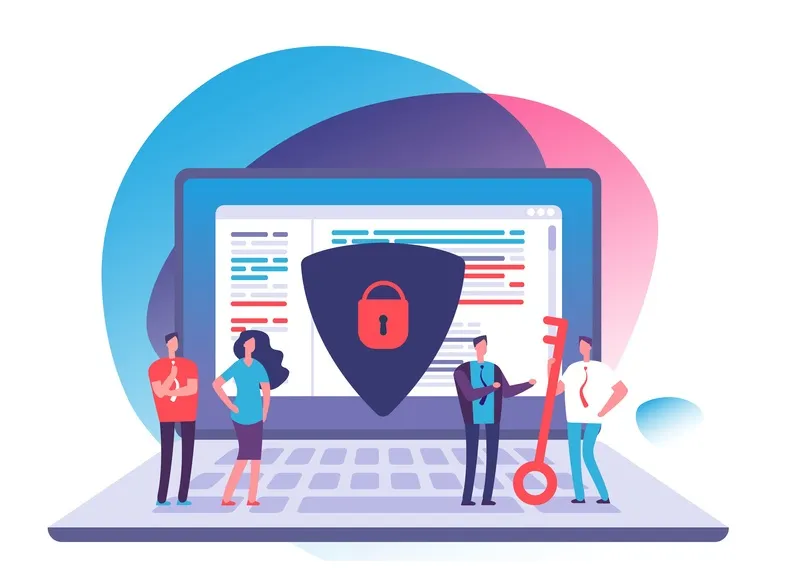In this ever-connected world, protection of data holds very crucial – irrespective of the size or nature of the organization, be it a small business, a corporate giant, a government institution, or a healthcare facility. Within the digital realm, where any sensitive data or confidential information, including personal or corporate data are regularly accessed and stored – the stakes are higher than ever. These critical pieces of information are not only invaluable but often irreplaceable if lost, and the ramification of falling into wrong hands can be nothing short of catastrophic that can extend far beyond financial loss, encompassing damage to any business’ reputation and the erosion of customer trust. Hence, cybersecurity planning is not merely a choice but a commitment to ensuring the safety and confidentiality of the information entrusted to you.
Creating a Response Policy for Data Breach
Through this article, we will delve deeper into critical aspects of creating a response policy for data breach that will shed light on important steps and strategies that essential for seamless cybersecurity planning, defense and response for any event of data breach.
Also read : Top 5 Technology 2023 in Computer Science
The types of data are contained in a data incident?
In order to initiate cybersecurity planning or any data breach response plan, it is essential to understand the types of data that can be implicated. This can be categorized in two broad categories: personal data and corporate data. Personal data contains highly sensitive information such as social security numbers, bank account numbers, healthcare records – the exposure of such data can have a severe impact on an individual ranging from identity theft to financial harm to healthcare privacy violation. Whereas on the corporate front, the stakes are equally high as it includes customer data records, intellectual property, financial and other proprietary information. A breach involving such data can not only lead to financial loses but can also damage organization’s reputation and legal liabilities. Therefore, depending on the type of data – one must notify customers and take appropriate measures as part of their response plan.
After a data breach, who bears what responsibility?
Following a data breach, the allocation of responsibilities among various stakeholders within the organization is very critical to ensure an effective and coordinated response. While the specifics of responsibility may vary depending on company and industry, these predominantly include legal, technical, communication and public relations efforts.
1. Legal Responsibility: The legal team within the organization plays a pivotal role in assessing the legal implications of the breach. They need to determine if any laws or regulations have been violated, particularly in cases where customers' protected information was involved. They are also responsible for guiding the organization on compliance with data protection and privacy laws.
2. Technical Responsibility: The technical team is tasked with stopping the breach and remediating any damage caused. They are on the front lines, working to identify and address the vulnerabilities that led to the breach. This includes taking immediate steps to contain the breach, forensics to understand what happened, and implementing security measures to prevent further breaches.
3. Communication and Public Relations Responsibility: Communicating about the breach is critical, both internally and externally. The communication team and public relations experts are responsible for crafting messages, managing crisis communication, and ensuring that accurate and timely information is disseminated to the affected parties, employees, and the public.
4. Human Resources (HR) Responsibility: If employee information is compromised, the HR department may become involved. They are responsible for addressing employee concerns, notifying affected employees, and assisting with any necessary support or counseling.
5. C-Suite Executive Involvement: For data breaches of a significant size or impact, it's essential to involve C-suite executives. These leaders may include the CEO, CFO, and CIO, who can provide strategic direction, allocate resources, and make critical decisions about the organization's response and future cyber-security measures.
Also read : Top 5 Fintech Companies in New York City (NYC)
What is the procedure for internal escalation?
Under cybersecurity planning, any data breach internal escalation must be swift and effective! It essentially involves timely notification of the relevant teams or personnel. When an issue is identified, raising a red flag or concern becomes of paramount importance. To facilitate this, having a clear chain of command and well-defined procedures in place is very important. This not only streamlines the response but also ensures that no time is wasted in determining who should take charge. By adhering to a structured and well-communicated procedure, organizations can minimize the impact of the breach and work toward a swift resolution.
What is the procedure for external escalation?
External escalation is a critical step in the response to a data breach. While internal escalation focuses on handling the breach within the organization, external escalation involves engaging with external entities such as law enforcement agencies, regulatory bodies, and the affected parties. However, it's not just a matter of involving external entities but understanding timing and manner to engage with them effectively. Moreover, it is equally important is to recognize the precise nature of assistance required from external sources, as data security is at the core of the matter. Recognizing the nuances of when, how, and to what extent to engage with external entities is a key aspect of a well-executed data breach response plan.
The Ultimate Solution – BitSight!
As we delve into the critical issues surrounding data breaches and cybersecurity planning, it's essential to recognize that solutions exist to mitigate risks and enhance an organization's security posture. BitSight security offers a suite of solution that can strengthen cybersecurity planning in a multitude of ways. A leading name in security ratings, these quantitative metric not only measure performance over time but also provide a panoramic view of an organization's cybersecurity planning. By offering this comprehensive perspective, Bitsight encourages a continuous improvement strategy to effectively manage cyber risks, both internally and externally, across their extended ecosystems. With security rating spanning a scale ranging from 250 to 900, a higher rating signifies a superior overall security posture. This transformative approach to cybersecurity planning empowers organizations to not only identify vulnerabilities but also to proactively enhance their defenses, ultimately ensuring a safer digital environment for themselves and their stakeholders. Equipped with invaluable data, security teams use a systematic approach to assess and continually manage the organization’s internal security performance through:
- Improved Visibility: Gain a comprehensive view of your security performance across all subsidiaries, business units, and geographic locations. Assess the status of each security control, track improvements over time, and receive actionable recommendations for remediation.
- Continuous Controls Monitoring: Continuously evaluate the effectiveness of your security controls and maintain ongoing vigilance over your security performance. BitSight empowers teams to gain insights into the state of each control, ensuring that progress is monitored and maintained.
- Advanced Cybersecurity Analytics: Instill confidence among stakeholders by communicating meaningful metrics within the context of your cybersecurity planning. BitSight equips you with the tools to convey cybersecurity insights that resonate with your audience, fostering trust and transparency.
1. Bitsight for Management of Security Performance: With above benefits, through Security Performance Management, teams can effectively mitigate risks, enhance assurance and oversee a robust cybersecurity planning. Many organizations rely on BitSight's insights daily predominantly for Governance, Management and Assurance – these daily insight further helps to streamline decision-making, assess the effectiveness of security controls, benchmark against peers, communicate program performance, and establish consistent performance benchmarks.
2. Using Bitsight to Manage Third-Party Risk: BitSight empowers vendor risk managers by simplifying and enhancing their processes through continuous monitoring and quantifying the cyber risk associated with third parties. By gaining insights into the Security Rating and the inherent cyber risk of third parties, security teams can obtain a straightforward snapshot of an organization's security posture. This objective, evidence-based approach streamlines vendor risk management, improves efficiency, and provides an effortless means to monitor performance over time.
3. Analytics for Bitsight Attack Surface: With in-depth insight into organization’s attack surface, BitSight also highlights the potential areas of vulnerability. This comprehensive approach in return gives organization a deeper understanding of attack vectors providing an aid to take targeted steps that will in-turn strengthen the defenses and minimize the risk of data breach.
Also read : what is importance of science and technology in our life
Why Bitsight leads in Security Ratings?
In 2011, BitSight emerged with a visionary mission: to create a credit score for cyber risk. Since its inception, it has evolved into a pivotal cornerstone of cybersecurity programs worldwide, serving as an indispensable tool for companies to manage, measure, and comprehend their security posture, as well as that of the entities they engage with. Today, BitSight is the trusted choice of over 42,000 users spanning more than 3,000 companies, all relying on BitSight's data to drive better, smarter risk decisions. BitSight's exceptional offering, the BitSight Security Rating, is more than just a metric. It's a quantifiable reflection of security strength that stands as the only rating independently correlated with data breaches, ransomware attacks, and even company stock performance. Making Bitsight an essential partner for organizations seeking to fortify their digital assets and navigate the complexities of modern cybersecurity. BitSight's leadership in security ratings is founded on its comprehensive data, advanced analytics, continuous monitoring, benchmarking capabilities, and the proactive approach it brings to cybersecurity. Together, these qualities elevate BitSight as a true pioneer in the realm of security ratings, arming organizations with the knowledge and tools they need to proactively defend against cyber threats and maintain their competitive edge in the digital age.
FAQs:
Q: What are the common types of data involved in data breaches?
A: Data breaches can involve various types of data, including personally identifiable information (PII), financial data, intellectual property, and more.
Q: What is Security Rating?
A: A Security Rating is a powerful quantitative metric providing teams with a straightforward indicator of the organization's evolving security performance.
Q: What is the BitSight Security Rating?
A: Premier security rating that is world’s most trusted. It is only rating highly correlated with critical business outcomes including data breaches, ransomeware attacks and company stock performance.
Q: How can BitSight Security Ratings benefit my organization's cybersecurity program?
A: BitSight Security Ratings offer insights into your organization's security posture, helping you identify vulnerabilities, manage third-party risks, and proactively address potential attack surfaces.
Q: What are some best practices for creating a data breach response policy?
A: Best practices include categorizing data, clarifying responsibilities, establishing clear escalation procedures, and regularly updating and testing the policy to ensure its effectiveness.
Recommended to read : Top 5 Technology 2023 in Computer Science


